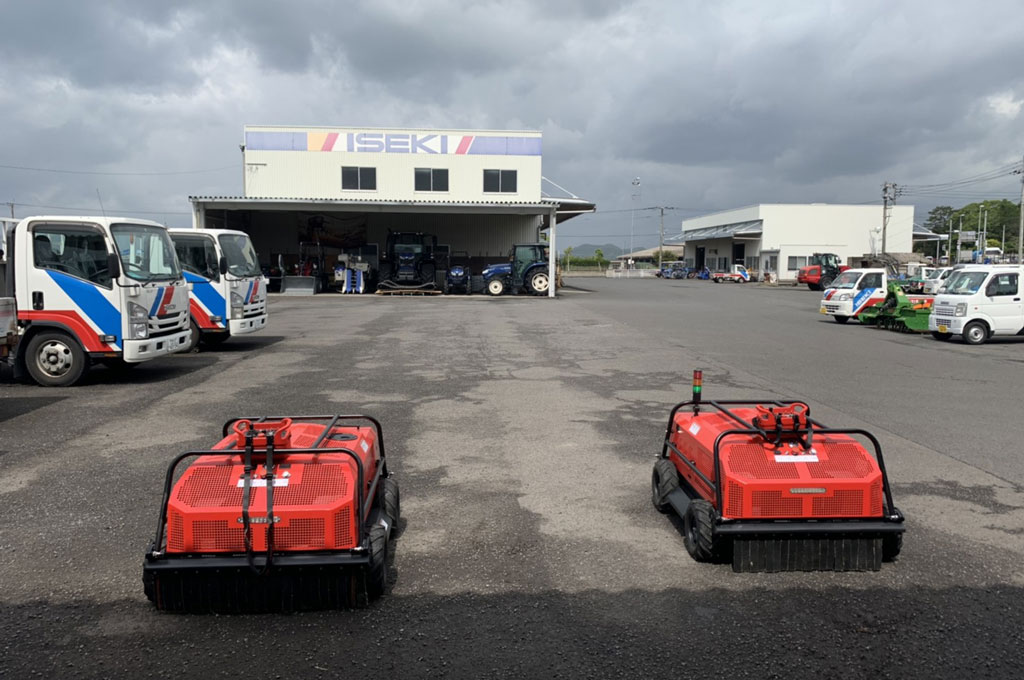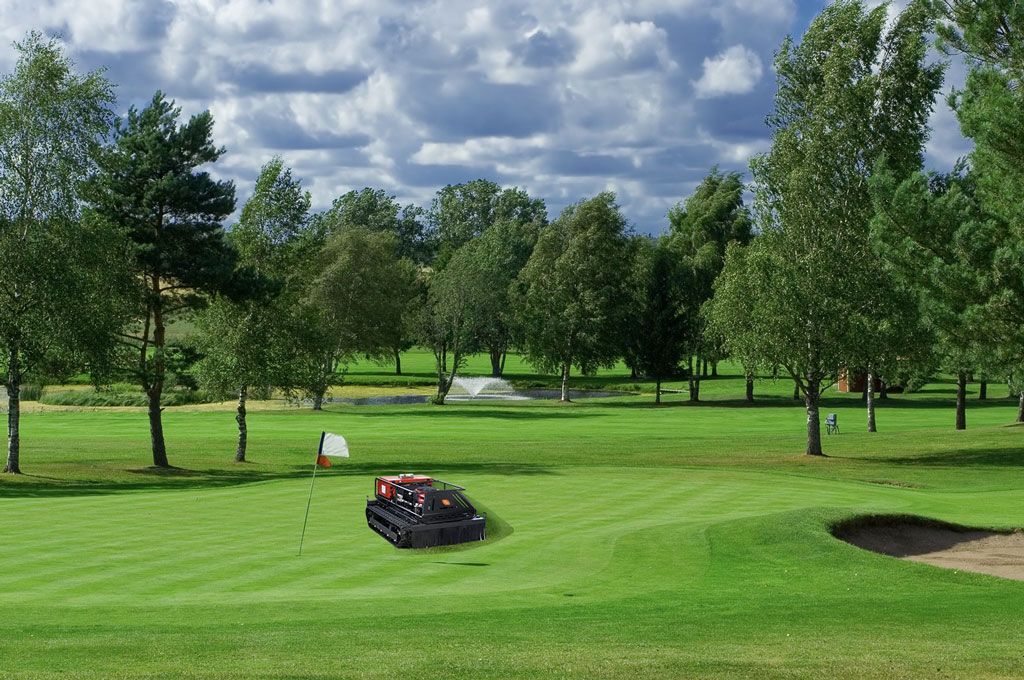Introduction
Demand for industrial robotic lawn mowers has surged as large sites like solar farms, airports, and industrial parks seek more efficient, cost-effective, and safer landscape maintenance. At the heart of this transformation is autonomous path planning, which enables these robots to mow systematically rather than randomly, significantly improving productivity and reducing operating costs. In this article, we’ll delve into the meaning of autonomous path planning, the technology behind it, the challenges it faces, and how the MC700 from BotusMov sets a new standard for industrial mowing.
What is Autonomous Path Planning?
Definition: Autonomous path planning refers to a robotic lawn mower’s ability to automatically determine a mowing route, optimize coverage, avoid obstacles, manage slopes, and adapt to changing conditions by marking a work area on a map using a mobile app. All without human intervention.
Traditional Methods vs. Autonomous Mowing
Traditional robotic lawn mowers typically rely on boundary lines or random patterns to cover lawn areas. These methods are inefficient and less flexible when the site layout changes or obstacles fluctuate.
Importance in Industrial Settings
Industrial sites are large and complex (e.g., rows of solar panels, support structures, and fencing), and maintenance windows may be limited to avoid disrupting operations. Therefore, autonomous path planning has become a must-have feature for industrial sites such as photovoltaic power plants and airports.
Key Technologies Behind Path Planning
To ensure robust and reliable autonomous path planning, multiple technologies must work together:
a) GPS + RTK (Real-Time Kinematic) Correction
High-precision GPS combined with RTK enables the mower to obtain its position with centimeter-level accuracy. This enables tight route adjustments, minimizes overlaps, and avoids missed sections.
b) Sensor Fusion (Cameras, LiDAR, Radar, Ultrasonic, etc.)
These sensors provide real-time environmental data: obstacle detection (e.g., rocks, equipment, animals), slope and terrain changes, and changes in vegetation density. Combining data from multiple sensors improves reliability.
c) Artificial Intelligence/Machine Learning Algorithms
Path optimization, dynamic adjustments, obstacle classification, learning recurring patterns (e.g., areas with common obstacles), and predictive adjustments (e.g., to address seasonal growth) are all driven by AI.
d) Path Memory and Mapping
Once the work area is defined, route mapping and memory capabilities enable the robot to reuse successful paths, reducing computational load and adapting to new obstacles or layout changes over time.
MC700: Industrial Path Planning Case Study
Here’s how the BotusMov robotic lawn mower implements autonomous path planning and related technologies to excel in industrial environments.
Features MC700 Specifications/Functions
Here’s how the BotusMov MC700 robotic lawn mower implements autonomous path planning and related technologies to excel in industrial environments.
| Feature | MC700 Specification / Capability |
|---|---|
| Navigation & Power | Hybrid or electric drive; remote control / autonomous modes; cutting width ~700 mm; programmable cutting height (e.g., 5-90 mm). |
| Obstacle Handling & Terrain | Capable to handle slopes up to ~45°; tracks or strong traction to manage uneven or steep surfaces; real-time obstacle detection via sensors and possibly optional GPS/APP connectivity. |
| Remote Monitoring | Remote control range (200-300 m in many reports), remote diagnostics, optional GPS navigation module. |
| Path Planning Performance | Memory/repeatable routes; ability to mow solar farm under panels; equipped for dynamic route optimization to avoid supports, shadows, and other fixed obstacles. |
MC700 Path Planning in Practice
In a solar farm, the MC700 can map a solar farm, plan mowing strips between solar farm towers, avoid mowing in shaded areas that don’t require frequent mowing, and adjust paths based on changes in vegetation.
At airports or large industrial sites, it can plan lanes for large open spaces, avoid sensitive areas, and adjust operation times to lower traffic hours.
The MC700 supports remote control for initial setup and mowing, and can operate autonomously after the path is mapped and optimized.
Advantages of Autonomous Path Planning
Improve Efficiency
Less time is spent mowing mowed areas, with less overlap; the MC700 mows faster per charge than random-pattern mowers.
Reduce Labor and Costs
Less manual supervision; fewer re-mowing or manual corrections.
Improve Safety and Reliability
Obstacle avoidance reduces the risk of damage or accidents; remote monitoring protects operators from hazardous areas.
Repeatability and Consistency
Predetermined, repetitive paths ensure a uniform lawn appearance, which is particularly important in industrial environments where visual consistency may be required.
Scalability
Once a mapping and routing system is established, adding more MC700 devices or expanding the area does not require starting from scratch.
Challenges and Limitations
GPS Signal Integrity
GPS signal integrity is limited in areas with weak signals (for example, under large tree canopies or near tall buildings).tures), GPS + RTK may struggle; backup localization methods needed.
Dynamic obstacles
Vehicles, human workers, wildlife may move unpredictably; need for fast detection and safe pausing or rerouting.
Terrain & slope extremes
Very steep or rugged terrain may challenge the mower’s traction and stability.
Power & battery life
For very large areas, battery capacity and charging logistics are crucial; MC700’s hybrid/electric design helps, but scheduling and recharge strategy matter.
Initial mapping/setup cost
The first mapping, configuration, and testing of optimal paths require time and possibly on-site expertise.
Future Trends in Autonomous Path Planning
Cloud-based fleet management
Orchestrating multiple MC700 units or similar machines via centralized dashboard to share maps, schedule mowing, monitor performance.
Predictive path optimization
Using data over time (weather, grass growth, obstacle movement) to adjust mowing frequency and path layouts proactively.
Incremental mapping & self-learning
The mower improves its own maps, detecting wear patterns, soil compaction, drainage issues, and adjusting path planning accordingly.
Integration with smart site infrastructure
IoT sensors, weather stations, solar panel monitoring systems feeding data to adjust mowing schedules (e.g. avoid mowing during high heat or rain).
Conclusion
Autonomous path planning is no longer optional for industrial robotic lawn mowers — it is the backbone of modern, efficient mowing in large or complex industrial environments. The MC700 exemplifies how GPS + RTK, sensor fusion, AI, route memory, and remote operation combine to deliver high performance, lower costs, and higher safety.
For solar farms, airports, power plants, and expansive industrial properties, adopting an industrial robotic lawn mower with robust autonomous path planning like the MC700 can significantly improve operations.
Call to Action
Are you managing large industrial grounds or a solar farm and want to explore how MC700 can optimize your mowing operations? Contact BotusMov today for a demo, site assessment, or custom path planning solutions to match your terrain, schedule, and safety requirements.


